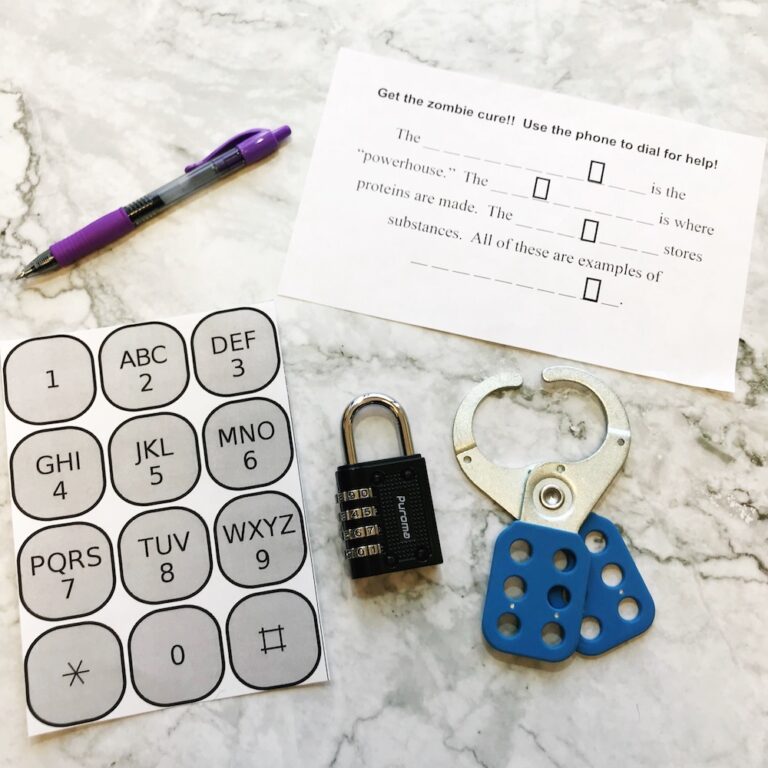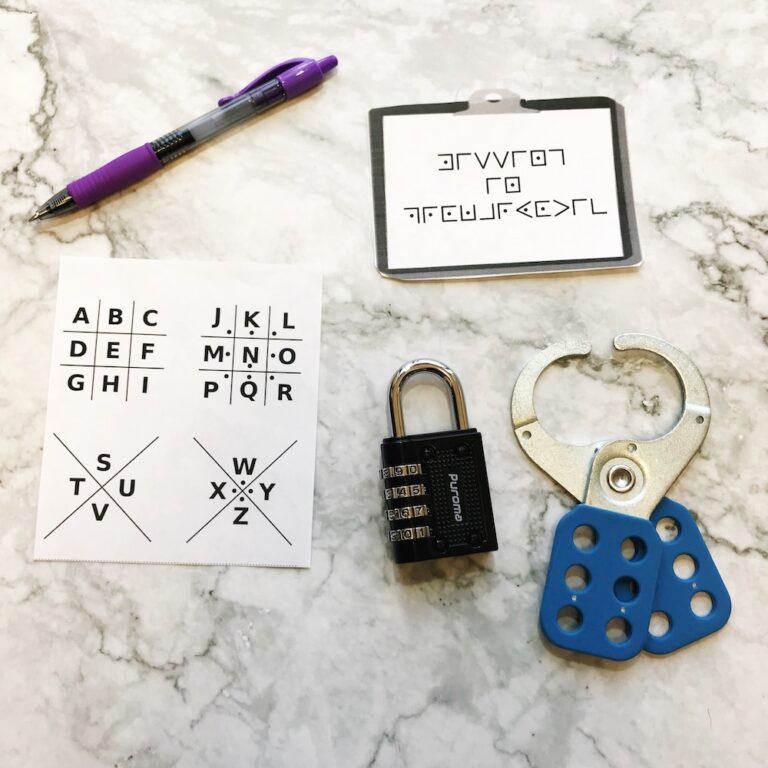Prokaryotic and Eukaryotic Cells Escape Room
The Prokaryotic and Eukaryotic Cells Escape Room is an immersive experience for your students that allows them to demonstrate their knowledge of the two types of cells in a fun and engaging way.
A Unique Escape Room Experience:
Unlike many escape rooms, the teacher is in total control of which of the 8 puzzles they want to use and in which order to use them. Each puzzle is independent of the others. This is great for shorter or longer class periods.
Student Background:
Students will need to have an understanding of the basic characteristics of organisms, including prokaryotic or eukaryotic, unicellular or multicellular, autotrophic or heterotrophic, and mode of reproduction. They will need to know how characteristic animal behaviors and specialized plant structures affect the probability of successful reproduction of animals and plants



Looking for more on Prokaryotic and Eukaryotic Cells?
What's Included in the Product?
- Teacher directions
- Detailed answer key for each puzzle
- Single Student Digital Version PPT that can be uploaded into Google Slides
- Single Student Print Version in PPT and PDF for families to print at home
- Editable Teacher Version PPT
- Digital answer sheet (Google form) that is great for 1:1 or Google Classrooms. Replaces paper answer key if you choose.
- Video challenge to set the mood for the challenge
- 8 unique puzzles with all printable props
- A list of over 50 ideas for prizes
- Reward templates
- 30 unique signs to hold up for the picture at the end (plus, editable template)
What Materials Will I Need?
The escape room can be run in the classroom or online (see Distance Learning Ready in the next section).
In-Class Escape Rooms
The cheapest and easiest method is to use manila envelopes for the puzzles (all directions provided).
All necessary printed materials for preparation are included. Laminating the materials will preserve them for repeated use.
For the Prokaryotic and Eukaryotic Cells Escape Room, you will also need:
- Brads (paper fastener) for one of the decoder rings
Optionally, for a more authentic escape room each group will need the following:
- One Lockout Hasp
- Four, 4-digit locks
- One, 3-digit lock
- One storage box that includes a place for the lockout hasp
Students may submit their answers on paper or using a Google Form (the link is included).
Distance Learning Ready
Distance Learning methods include digital or print-at-home versions.
Digital Version
You can assign the “Single Student Digital Version” PowerPoint through email or your school's learning management system. This file has no answers and students solve by reading and answering questions or manipulating images on the slide.
This version can also be uploaded to Google Drive and opened with Google Slides.
- Open Google Slides.
- Go to the File menu and choose Open
- Find the tab on the right called Upload
- Click Select a File on Your Device
- Select the “Single Student Digital Version Digital Version”
- Click Open
If you do make Google slides, the copyright only allows for use with your own students. Do not share the link publicly.
Print-at-home Version
You can also assign or email the Single Student Print Version as a PPT or PDF for families to print at home.
For the printed Prokaryotic and Eukaryotic Escape Room, the student will also need:
- Brads (paper fastener) for one of the decoder rings
Essential Questions and Standards
Essential Questions
-
What are the basic characteristics of prokaryotic and eukaryotic cells?
-
How are these cells classified into currently recognized kingdoms?
Standards
- 6.12 A - understand that all organisms are composed of one or more cells
- 6.12 B - recognize that the presence of a nucleus is a key factor used to determine whether a cell is prokaryotic or eukaryotic
- 6.12 D - identify the basic characteristics of organisms, including prokaryotic or eukaryotic, unicellular or multicellular, autotrophic or heterotrophic, and mode of reproduction, that further classify them in the currently recognized Kingdoms
- MS LS1-1 - Conduct an investigation to provide evidence that living things are made of cells; either one cell or many different numbers and types of cells.
- MS LS1-2 - Develop and use a model to describe the function of a cell as a whole and ways parts of cells contribute to the function.
- MS LS1-4 - Use argument based on empirical evidence and scientific reasoning to support an explanation for how characteristic animal behaviors and specialized plant structures affect the probability of successful reproduction of animals and plants respectively.
Download Over $100 in FREE Resources
For Middle School Science
Simply create a login below and gain immediate access to a selection of our Kesler Science product line worth $100 - for FREE. There's a full version of every product type! You'll also join tens of thousands of middle school science teachers who receive timely tips and strategies straight to their inbox.





